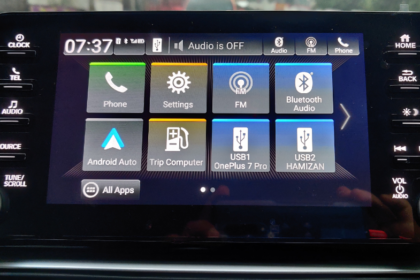Can dealers get away with generic landing pages that don’t focus on specific vehicles? No, they need model-specific landing pages to boost conversions.
It’s essential for car dealers to have landing pages that convert into offers and sales. Everything leads to conversions for dealers, which is why it’s important to have pages that engage potential buyers and drive them to the process of actually buying a vehicle. The automotive world is highly competitive, which makes it even more important to have model-specific landing pages that boost conversions.
What is a conversion?
Car dealers and marketing agencies are constantly talking about conversions, but do you know what they are. Converting online traffic means turning website visitors into potential customers. This is done using the call-to-action messages which should encourage visitors to take a specific action. These actions are often leading visitors to fill out forms or engage with the dealership team regarding a vehicle. Another choice would be to fill out a financing application, which is an indicator that a potential buyer is pretty serious about the vehicle.
What are model-specific landing pages?
These pages are dedicated pages that focus on one model instead of an entire brand lineup. This means you would see pages discussing the features, pricing, and benefits of a specific model. In most cases, the most effective pages seem to have the model year, make, model, and trim level. Some pages can leave out the trim level and highlight all trims, but the best pages will focus on one trim, giving the pricing and key highlights of that vehicle, which helps customers gather more information.
What aspects should effective landing pages include?
The first items that come to mind are compelling content and high-quality visual elements, but to be effective, landing pages also need strong headers, subheadings, and clear calls-to-action. Here’s a little about some of these elements.
Go strong with the title
Your titles and subtitles, or subheadings need to be strong and enticing for the website visitor, but also made to allow search engines to navigate your content. The main title should clearly include the vehicle make and model. This is the best way to allow search engines to recognize the focus of the page.
The subheadings make it easy to break up the content into digestible sections, ensuring you can quicky locate desirable details and information if you’re reviewing the page as a user. For users performing vehicle comparisons, these sections are invaluable.
Visual elements matter
Its hard to know what the content on a page is describing unless you can see it in pictures or in a video. When you create model-specific landing pages that you want to engage and convert, its best to have high-quality images and videos to give visitors a better look at the vehicle and help them visualize being behind the wheel. Using professional photographers to capture the best images, can help landing pages appear much more engaging and enticing.
Great content goes a long way
What’s going on in the images on your pages? This is where the written content comes in. You still need to tell your potential customers about the vehicle. This can mean highlighting special features, discussing pain points and how the vehicle handles them, and offering some insights into the vehicle itself. The words that will describe what’s going on in your images make for stronger landing pages. This is also where some of your keywords will come into play, and they need to be included naturally and not forced.
What do you want customers to do next?
The final element to creating model-specific landing pages that convert is to include effective calls-to-action that tell visitors what you want them to do. These elements help to turn visitors into customers. Some CTAs can use clear and action-oriented language, such as “Shop New Inventory” or “Claim This Offer,” which helps create a sense of urgency and direction for customers. Without CTAs, customers might not fully understand the direction or what you want them to do, even if it seems like it would be obvious. Using CTAs on landing pages, you can move potential buyers down the sales funnel.
If you want to have model-specific landing pages that convert into sales, you’ve got to have the right elements on those landing pages. These pages can be the most important part of your digital marketing strategy, ensuring you can bring more customers to your dealership. Is it time to double-check your landing pages to ensure they are model-specific?




